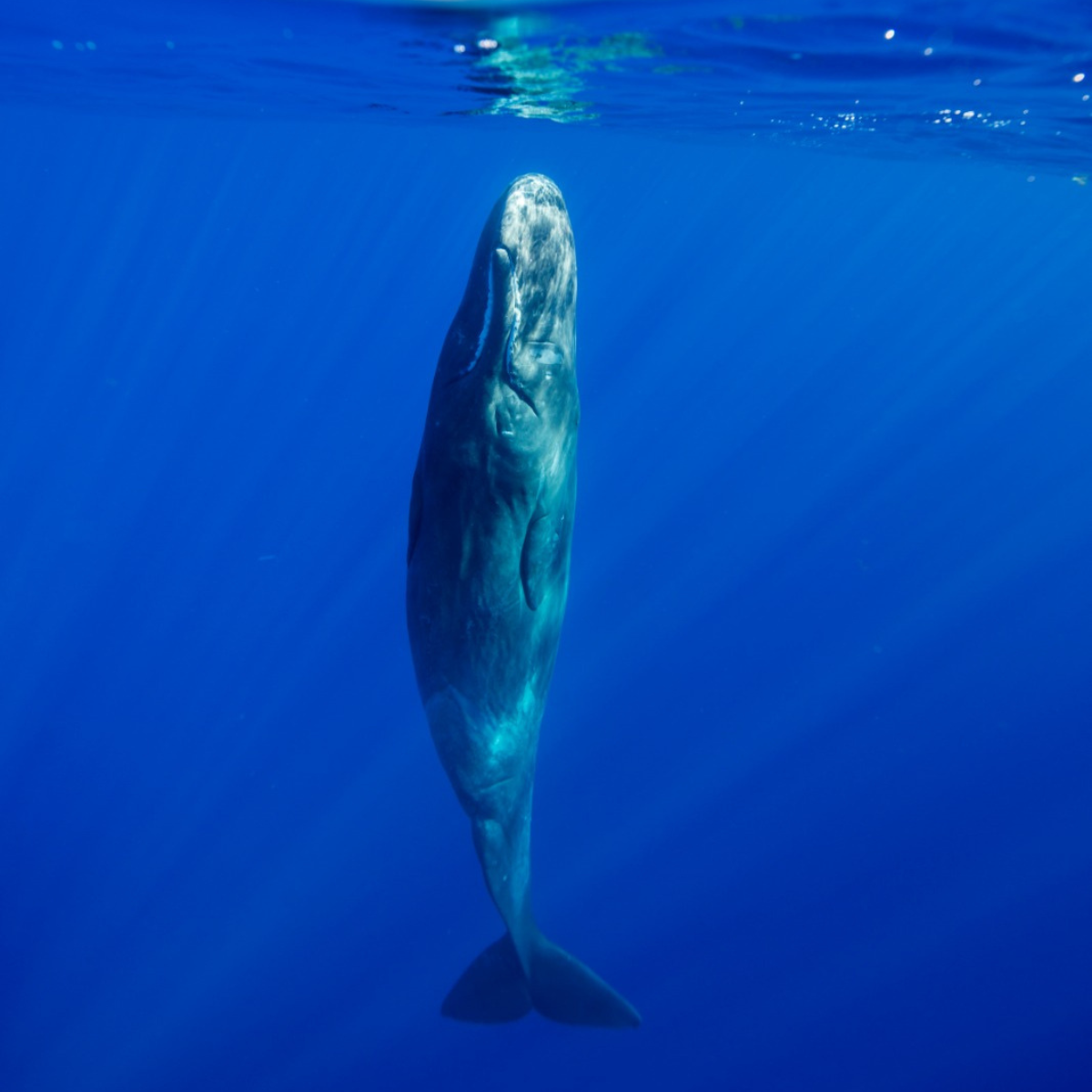5 keys to remember
- Tailored
- Feel at Home
- Authenticity
- Ethics
- Privacy

As Mauritius is on the migration route of the humpback whales, with a population of some 300 individuals living on the north and west coast of Mauritius, your holiday is an ideal opportunity to encounter these fabulous ocean creatures. This protected species is to be seen during an exclusive spotting boat tour. Let’s dive together to meet the giants of the sea.
The whale is a marine mammal belonging to the cetacean family, which is divided into two categories: the mysticetes, including baleen whales, and the odontocetes, including toothed whales. The whale is a very large animal: it can measure up to 30 metres in length. It can weigh up to 150 tonnes. It also has a tongue that can weigh 2 tonnes. This mammal breathes with its lungs when it swims on the surface. Some species of whale, such as the sperm whale, can dive to a depth of 2 km and remain underwater for more than an hour.
Sperm whales are the largest cetaceans in the oceans. Male sperm whales are generally found in cold waters where food is plentiful, while females are found in equatorial or subtropical waters, which is the case in Mauritius. Their life expectancy is about 70 years. The population of sperm whales has largely decreased during the 20th century, notably because of hunting which lasted until the 1980s. Today, the species is protected in almost all of the world’s countries, including Mauritius.

The difference between a whale and a sperm whale is the teeth. The whale has baleens, and only on its upper jaw. The baleens are sorts of soft horn blades covered with hair. They allow the whale to filter the water so that it can swallow only plankton, its main food. Other fish and marine animals that it catches involuntarily are spat out. The sperm whale, on the other hand, is a true marine carnivore and has teeth on its lower jaw. These teeth, which weigh almost 1 kg each, enable it to feed on crustaceans, squid, herring and jellyfish.

Although sperm whale watching from a boat is still possible, swimming with these enormous cetaceans is highly regulated in Mauritius. No launching is allowed, except for scientific, educational or media purposes with written permission from the authorities. Only NGOs or specialized professional journalists can obtain these authorisations. This is the case for the Marine Megafauna Conservation Organisation. To carry out a sperm whale watching dive in this particular setting, a financial contribution and the handing over of all rights on pictures to enhance the research fund, the strict respect of safe observation rules is expected. Swimming is only allowed for scientific purposes during survey missions and only after a few days training. It is not necessary to be a certified diver to participate: the discovery is conducted under apnea. The course teaches you how sperm whales live and how to approach them. Then finally comes the great adventure!
However, it can happen that outside of this very specific scientific context, that during a boat excursion, a scuba dive or during humpback whale watching during the southern winter (from June to October), you come across sperm whales. The rule: stay in the boat, or if you dive, stay away from the whales.

There are only a few people who have had the extraordinary opportunity to observe sperm whales in their natural environment, in the ocean, but their stories are always intense and the sensations unforgettable
The encounter usually takes place in shallow water or at the surface. As a sperm whale weighs around 50 tons and is several meters long, the thrill of the encounter is both immediate and intense. The mammals often stand upright, which adds to their giant dimensions. You are gripped by a feeling between apprehension and fascination. Eventually, as your heart begins to slow down, you will fall in love with sperm whales for the rest of your life. The cetaceans are fairly calm and sometimes have fun reproducing swimmers’ strokes, in a surprisingly graceful ballet. The presence of a whale calf and experiencing the love of its mother is one of the highlights of this unforgettable encounter.
This option is more accessible because it is less subject to conditions. It offers the opportunity to watch sperm whales around the west or north coast during an outing at sea. It is sometimes necessary to go far away to have the chance to meet the largest toothed whales in the world. This is an opportunity to capture this unforgettable encounter with photos.
We propose to our travelers responsible service providers who organize sperm whale watching trips by boat, such as the Blue Water Diving Centre (http://bluewaterdivingcentre.com/fr/prestations/observation-des-baleines-et-cachalots)

As with all whale watching, it depends on the weather conditions and the presence of sperm whales on the scheduled excursion. Your concierge will contact the service provider beforehand to make sure you have the best possible chance of spotting sperm whales on your outing.